The short answer is, in SpriteKit you use the fragment coordinates directly without needing to scale against the viewport resolution (iResoultion in shadertoy land), so the line:
vec2 samplePosition = (fragCoord.xy / maxResolution) + vec2(0.0, iTime * 0.01);
can be changed to omit the scaling:
vec2 samplePosition = fragCoord.xy + vec2(0.0, iTime * 0.01);
this is likely the root issue (hard to know for sure without your rendition of the shader code) of why you're only seeing black from the shader.
For a full answer for an implementation of a SpriteKit shader making a star field, let's take the original shader and simplify it so there's only one star field, no "fog" (just to keep things simple), and add a variable to control the velocity vector of the movement of the stars:
(this is still in shadertoy code)
float Hash(in vec2 p)
{
float h = dot(p, vec2(12.9898, 78.233));
return -1.0 + 2.0 * fract(sin(h) * 43758.5453);
}
vec2 Hash2D(in vec2 p)
{
float h = dot(p, vec2(12.9898, 78.233));
float h2 = dot(p, vec2(37.271, 377.632));
return -1.0 + 2.0 * vec2(fract(sin(h) * 43758.5453), fract(sin(h2) * 43758.5453));
}
float Noise(in vec2 p)
{
vec2 n = floor(p);
vec2 f = fract(p);
vec2 u = f * f * (3.0 - 2.0 * f);
return mix(mix(Hash(n), Hash(n + vec2(1.0, 0.0)), u.x),
mix(Hash(n + vec2(0.0, 1.0)), Hash(n + vec2(1.0)), u.x), u.y);
}
vec3 Voronoi(in vec2 p)
{
vec2 n = floor(p);
vec2 f = fract(p);
vec2 mg, mr;
float md = 8.0;
for(int j = -1; j <= 1; ++j)
{
for(int i = -1; i <= 1; ++i)
{
vec2 g = vec2(float(i), float(j));
vec2 o = Hash2D(n + g);
vec2 r = g + o - f;
float d = dot(r, r);
if(d < md)
{
md = d;
mr = r;
mg = g;
}
}
}
return vec3(md, mr);
}
vec3 AddStarField(vec2 samplePosition, float threshold)
{
vec3 starValue = Voronoi(samplePosition);
if(starValue.x < threshold)
{
float power = 1.0 - (starValue.x / threshold);
return vec3(power * power * power);
}
return vec3(0.0);
}
void mainImage( out vec4 fragColor, in vec2 fragCoord )
{
float maxResolution = max(iResolution.x, iResolution.y);
vec2 velocity = vec2(0.01, 0.01);
vec2 samplePosition = (fragCoord.xy / maxResolution) + vec2(iTime * velocity.x, iTime * velocity.y);
vec3 finalColor = AddStarField(samplePosition * 16.0, 0.00125);
fragColor = vec4(finalColor, 1.0);
}
If you paste that into a new shadertoy window and run it you should see a monochrome star field moving towards the bottom left.
To adjust it for SpriteKit is fairly simple. We need to remove the "in"s from the function variables, change the name of some constants (there's a decent blog post about the shadertoy to SpriteKit changes which are needed), and use an Attribute for the velocity vector so we can change the direction of the stars for each SKSpriteNode this is applied to, and over time, as needed.
Here's the full SpriteKit shader source, with a_velocity as a needed attribute defining the star field movement:
float Hash(vec2 p)
{
float h = dot(p, vec2(12.9898, 78.233));
return -1.0 + 2.0 * fract(sin(h) * 43758.5453);
}
vec2 Hash2D(vec2 p)
{
float h = dot(p, vec2(12.9898, 78.233));
float h2 = dot(p, vec2(37.271, 377.632));
return -1.0 + 2.0 * vec2(fract(sin(h) * 43758.5453), fract(sin(h2) * 43758.5453));
}
float Noise(vec2 p)
{
vec2 n = floor(p);
vec2 f = fract(p);
vec2 u = f * f * (3.0 - 2.0 * f);
return mix(mix(Hash(n), Hash(n + vec2(1.0, 0.0)), u.x),
mix(Hash(n + vec2(0.0, 1.0)), Hash(n + vec2(1.0)), u.x), u.y);
}
vec3 Voronoi(vec2 p)
{
vec2 n = floor(p);
vec2 f = fract(p);
vec2 mg, mr;
float md = 8.0;
for(int j = -1; j <= 1; ++j)
{
for(int i = -1; i <= 1; ++i)
{
vec2 g = vec2(float(i), float(j));
vec2 o = Hash2D(n + g);
vec2 r = g + o - f;
float d = dot(r, r);
if(d < md)
{
md = d;
mr = r;
mg = g;
}
}
}
return vec3(md, mr);
}
vec3 AddStarField(vec2 samplePosition, float threshold)
{
vec3 starValue = Voronoi(samplePosition);
if (starValue.x < threshold)
{
float power = 1.0 - (starValue.x / threshold);
return vec3(power * power * power);
}
return vec3(0.0);
}
void main()
{
vec2 samplePosition = v_tex_coord.xy + vec2(u_time * a_velocity.x, u_time * a_velocity.y);
vec3 finalColor = AddStarField(samplePosition * 20.0, 0.00125);
gl_FragColor = vec4(finalColor, 1.0);
}
(worth noting, that is is simply a modified version of the original )
